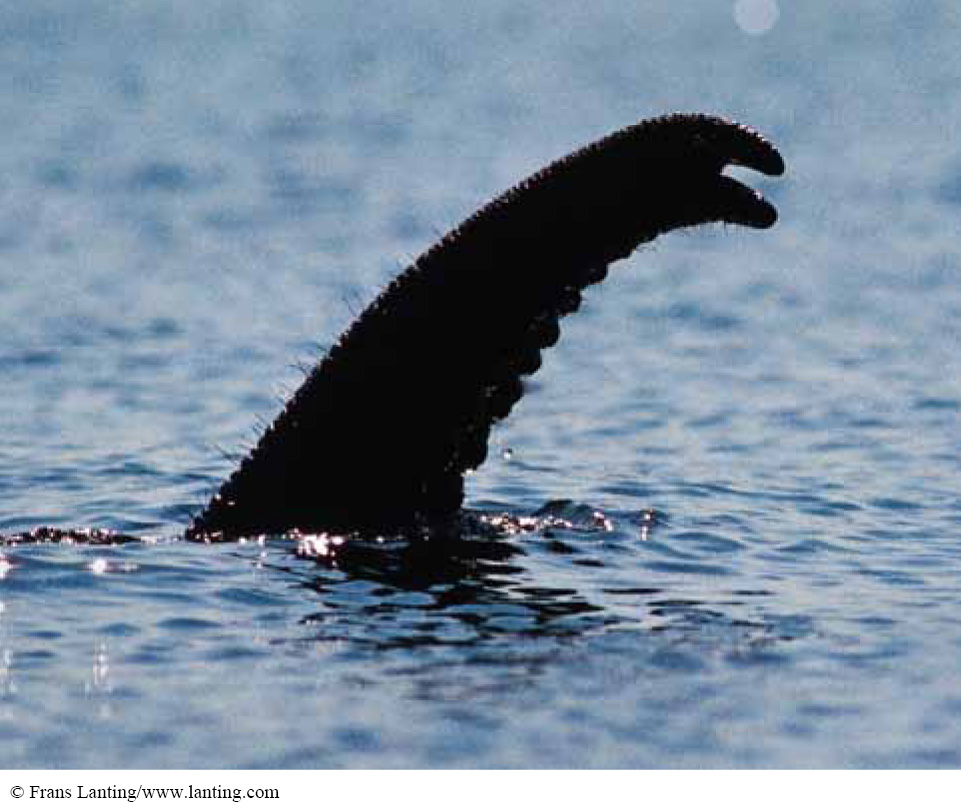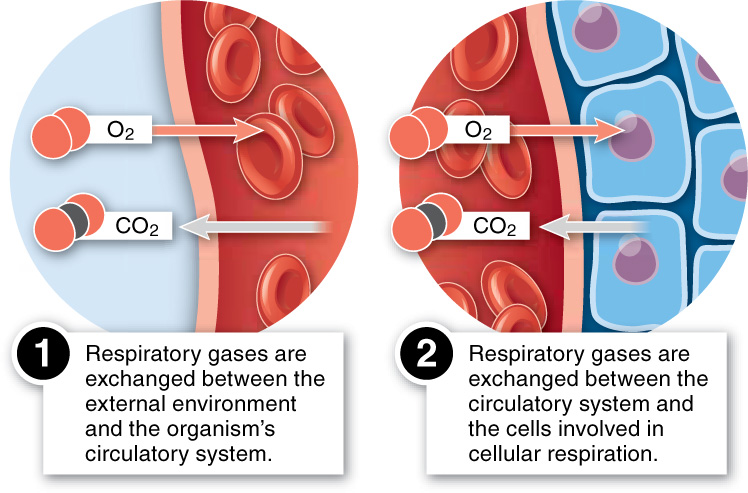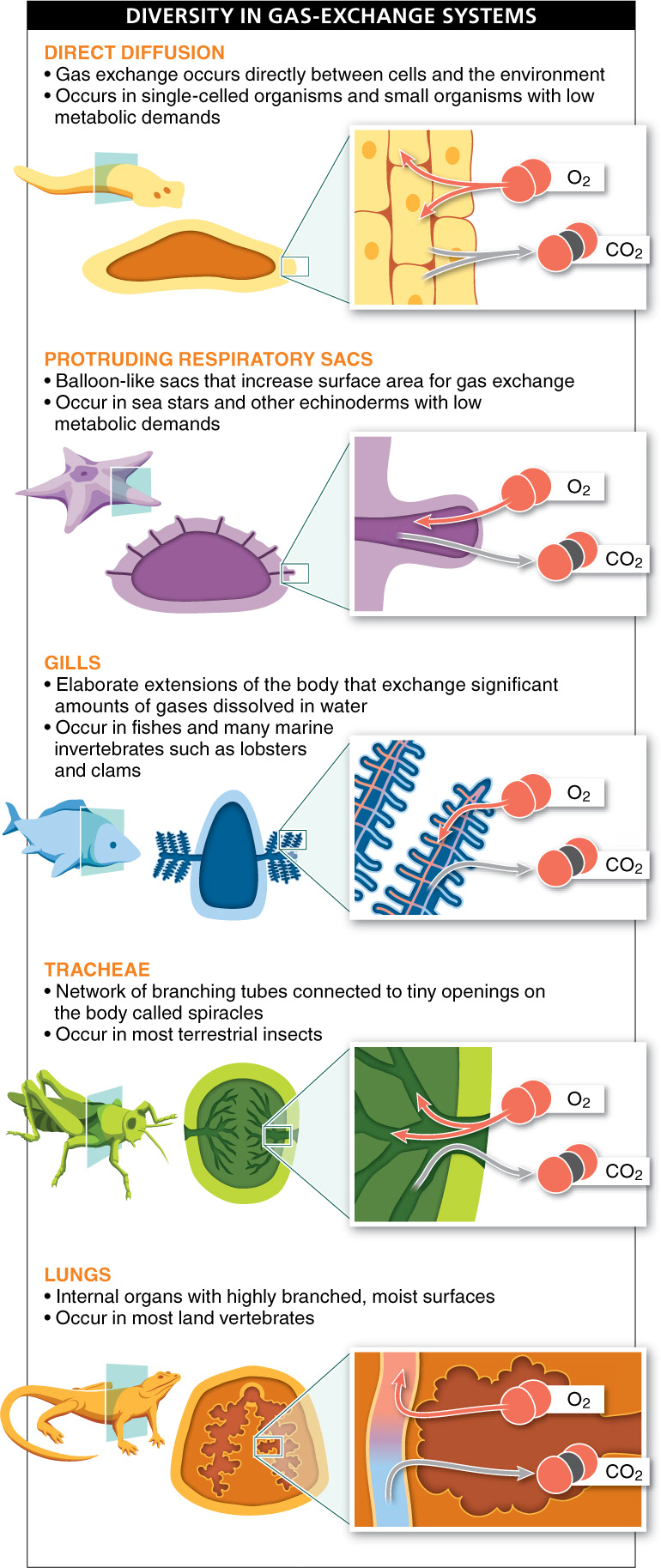


As we’ve seen, circulatory systems are like trucking systems and the highways on which they move. Of the substances they transport, among the most important are the respiratory gases. After all, aerobic respiration requires cells to take up oxygen and release carbon dioxide. But how do these gases get into and out of the circulatory system? Where and how does gas exchange take place? In the rest of this chapter, we investigate the structures where gas exchange occurs and the transport molecules that make it possible.
In single-
The first of these two stages can occur in several different types of organs specialized for respiration, such as lungs or gills. In all cases, however, it requires a respiratory medium—
1. Direct diffusion. Single-
2. Protruding respiratory sacs. Many slightly larger organisms also have low metabolic needs. Sea stars and other echinoderms have little balloon-
853
3. Gills. Fishes and many aquatic invertebrates, such as lobsters and clams, have gills. These extensions of the body are tremendously elaborate structures in which the large surface area allows extensive exchange of gases between the water and the blood vessels of the circulatory system.
4. Tracheae. Although insect bodies look rather solid, they have a huge number of tiny openings—
5. Lungs. Most land vertebrates have lungs. These are internal organs, characterized by highly branched, moist respiratory surfaces, across which gases in the air breathed in are exchanged with gases dissolved in the blood circulating through the lung tissue. Birds, reptiles, and mammals do virtually all of their respiration through their lungs, but amphibians (such as frogs) also exchange gases through their skin, which serves as a supplemental respiratory system. Their skin stays moist because of their largely aquatic lifestyle.
TAKE-HOME MESSAGE 21.12
In single-
Different organisms have evolved different mechanisms to facilitate gas exchange. Single-
Fishes and many aquatic invertebrates exchange gases through gills. Many insects exchange respiratory gases through tracheae, which are numerous small and extensively branching tubes that permeate their body. Finally, most land vertebrates use lungs to exchange respiratory gases.
854